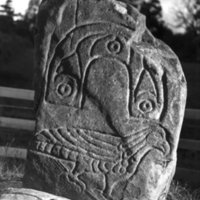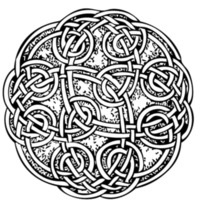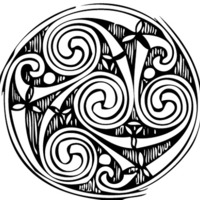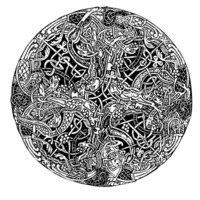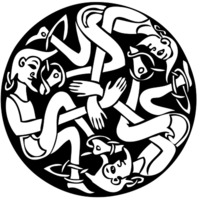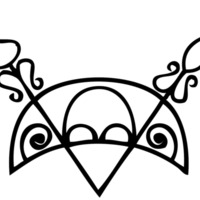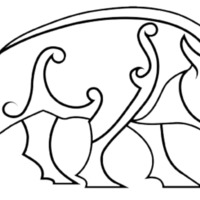Browse Items (26 total)
- Tags: Pictish Symbols
Sort by:
Interlace
According to artist George Bain, Religion and Pagan laws had the greatest influence on the art form of Celtic knots, playing an important role in there design.
The interlacing of human form and Celtic knots evolved from laws forbidding drawing…
The interlacing of human form and Celtic knots evolved from laws forbidding drawing…
Tags: George Bain, Groam House, Pictish Symbols
Spirals
The noble spirals of Aberlemno, Shandwick, Tarbat, Hilton of Cadboll, Nigg the Tara Brooch, and the Ardagh chalice led the way to the great art of the scribes, who produced the supreme masterpieces of the world’s decoration of books, profusely…
Tags: George Bain, Groam House, Pictish Symbols
Plant Forms
The reference to the plant forms which rarely occur in the Book of Kells and not at all in the Book of Durrow and Lindisfarne, have been used to prove that the two latter books belong to an earlier period. It is the author’s opinion (George Bain),…
Tags: George Bain, Groam House, Pictish Symbols
Human Figures
The representations of human figures by Celtic Artists were influenced by the Pagan Laws that forbade the copying of the works of the Almighty Creator. In Celtic Zoomorphic ornaments the physical appearance of man was not copied. His legs, arms,…
Tags: George Bain, Groam House, Pictish Symbols
Crescent V-rod
The Crescent and the Crescent with a V-rod through it, appear often on the Pictish Stones.
The crescent is thought to symbolise the moon/sun and also thought to symbolise death.
The V-rod is thought to be a bent or broken arrow.
The crescent is thought to symbolise the moon/sun and also thought to symbolise death.
The V-rod is thought to be a bent or broken arrow.
Tags: Pictish Symbols
Boar
The boar is an emblem of fertility, fearlessness, and strength, but also stubbornness, war, and chaos. As the meat of the boar is prized, it is also a symbol of hospitality.
Tags: Pictish Symbols
Bull
The bull was, and still is, a symbol of fertility, wealth, and status.
The bull likewise symbolizes ties to the land, ancestry, and kinship. A good bull was a sign of wealth in a culture that revolved around farming, the prestige of a clan’s…
The bull likewise symbolizes ties to the land, ancestry, and kinship. A good bull was a sign of wealth in a culture that revolved around farming, the prestige of a clan’s…
Tags: Pictish Symbols
Goose
A rare example of the Goose symbol can be seen on the Easterton Of Roseisle, Class I Pictish Symbol Stone from Moray, now housed in National Museum Scotland, Edinburgh. The stone slab features a goose, with neck arched back over body, above a…
Tags: Pictish Symbols
Wolf
A good example of the Wolf Symbol can be seen on the Ardross 'wolf' Stone, now housed in Inverness Museum.
Tags: Pictish Symbols
